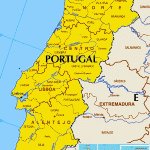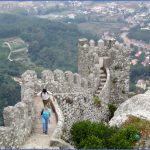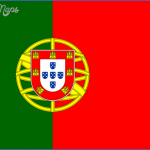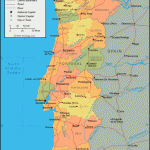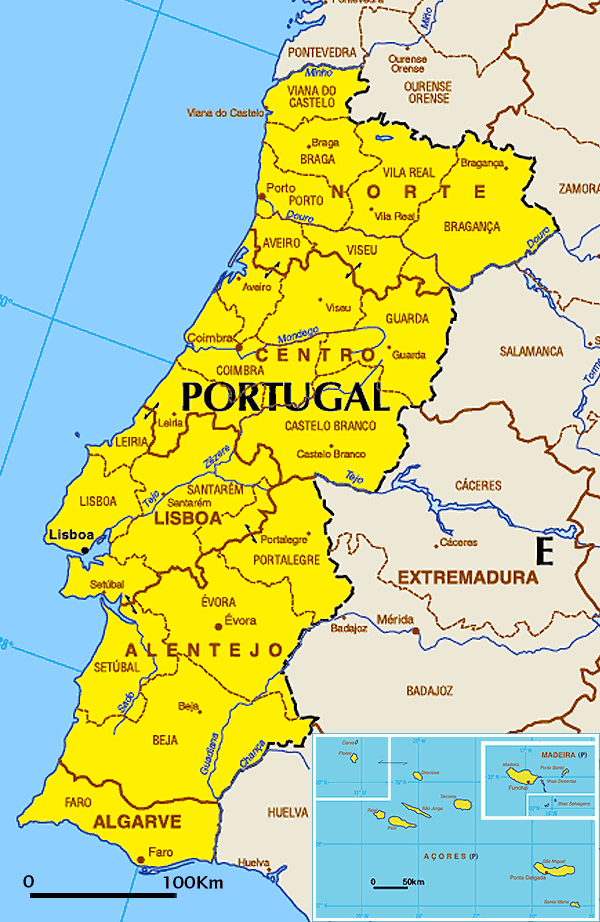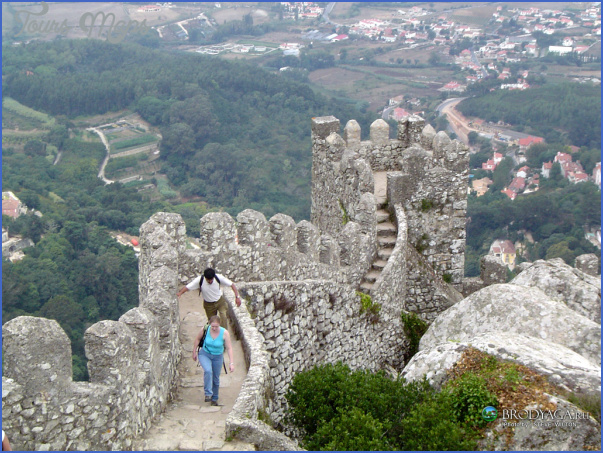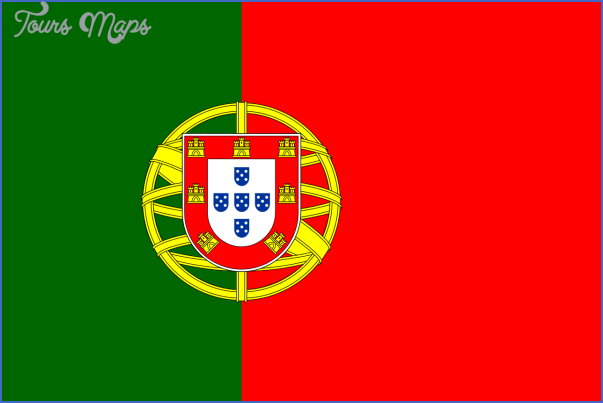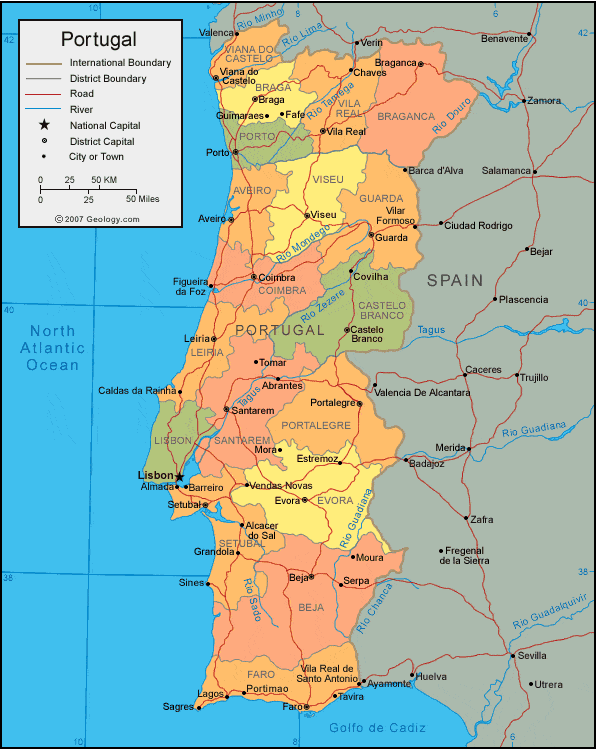PORTUGAL
In the era of Christopher Columbus, Vasco da Gama, and Magellan, Portugal was one of the world’s most powerful nations, ruling a wealthy empire that stretched from Africa to America to Asia Today, it is often overshadowed by its larger neighbor Spain. But while it shares the beaches, nightlife, and strong architectural heritage of the Iberian Peninsula, Portugal is culturally and geographically quite unique. It contains some of the most pristine wilderness areas in all of Europe, and some villages in the northeast have not changed in over 800 years. Despite ongoing modernization, Portugal’s rich, age-old traditions seem destined to stay rows of olive trees give way to ancient castles, and Porto’s wines are as fine as ever.
EARLY HISTORY. The first clearly identifiable inhabitants of the Iberian peninsula were the Celts, who began to settle in northern Portugal and Spanish Galicia in the 8th century BC. The Greeks and Carthaginians followed them, settling the coasts. After their victory over Carthage in the Second Punic War (218-201 BC) and their defeat of the Celts in 140 BC, the Romans gained control of central and southern Portugal. Six centuries of Roman rule, which introduced the Pax Romana and Latinized Portugal’s language and customs, paved the way for Christianity.
VISIGOTHS AND ARABIAN KNIGHTS (469-1139). The Iberian Peninsula felt the effects of the Roman Empire’s decline in the 3rd and 4th centuries AD. By AD 469, the Visigoths, a tribe of migrating Germanic people, had crossed the Pyrenees, and for the next two centuries they dominated the peninsula. In AD 711, however, the Muslims (also known as the Moors) invaded Iberia, toppling the Visigoth monarchy. Although these invaders centered their new kingdom of al-Andalus in Cordoba, smaller Muslim communities settled along Portugal’s
Jorge, and to the futuristic Parque das Na5oes. By night, listen to fado and hit the clubs in Barrio Alto. Daytrip to Sintra’s fairy-tale castles (828) before sipping sweet port in Porto (1 day; 838).
ONE WEEK From Lisbon (2 days) and Sintra (1 day), lounge on the beaches of Lagos (1 day; 831) and Praia da Rocha (1 day; 836), then move on to the university town of Coimbra (1 day; 837), and end your week in Porto (1 day). the sights, sounds, and cafes of Lisbon (2 days), daytrip to Sintra (1 day). Head down to the infamous beach-and-bar town Lagos (2 days), where hordes of visitors dance the night away, and take an afternoon in Sagres (835), once considered the end of the world. Check out the bone chapel in Evora (1 day; 830) and the mysterious convent in Tomar (1 day; 829). Head north to Coimbra (2 days) and Porto (2 days), then finish your tour in the impressive squares of Viana do Castelo (1 day; 841).
southern coast, an area they called the al-Gharb (now the Algarve); through nearly four centuries of rule, the Muslims left a significant legacy of agricultural advances, architectural landmarks, and linguistic and cultural customs.
THE CHRISTIAN RECONQUISTA AND THE BIRTH OF PORTUGAL (1139-1415).
Though the Reconquista officially began in 718, it didn’t pick up steam until the 11th century, when Fernando I united Castilla and Leon and provided a strong base from which to reclaim territory. In 1139, Afonso Henriques (Afonso I), a noble from the frontier territory of Portucale (a region centered around Porto), declared independence from Castilla y Leon. Soon thereafter he named himself the first King of Portugal, though the papacy did not officially recognize the title until 1179.
With the help of Christian military groups like the Knights Templar, the new monarchy battled Muslim forces, capturing Lisbon in 1147. By 1249, the Reconquista defeated the last remnants of Muslim power with successful campaigns in the Alentejo and the Algarve. The Christian kings, led by Dinis I (Dom Dinis; 1279-1325), promoted the use of the Portuguese language (instead of Spanish) and with the Treaty of Alcanices (1297) settled border disputes with neighboring Castilla, asserting Portugal’s identity as the first unified, independent nation in Europe.
THE AGE OF DISCOVERY (1415-1580). The reign of Joao I (1385-1433), the first king of the House of Aviz, ushered in unity and prosperity never before seen in Portugal. Joao increased the power of the crown and in doing so established a strong base for future Portuguese expansion and economic success.
The 15th century was one of the greatest periods in the history of maritime travel and naval advances. Under the leadership of Joao’s son, Prince Henry the Navigator, Portugal established itself as a world leader in maritime science and exploration. Portuguese adventurers captured the Moroccan city of Ceuta in 1415, discovered the Madeiras Islands in 1419, happened upon the uninhabited Azores in 1427, and began to exploit the African coast for slaves and riches a few years later.
Bartolomeu Dias changed the world forever when he rounded Africa’s Cape of Good Hope in 1488. Dias opened the route to the East and paved the way for Portuguese entrance into the spice trade. The Portuguese monarchs may have turned down Christopher Columbus, but they did fund a number of momentous voyages. In 1497, they supported Vasco da Gama, who led the first European naval expedition to India; successive expeditions added numerous East African and Indian colonies to Portugal’s empire. Three years after da Gama’s voyage, Pedro Alvares Cabral claimed Brazil, and Portugal established a far-flung empire.
Portugal’s monarchy reached its peak with Manuel the Fortunate (1495-1521) on the throne. Known to foreigners as the King of Gold, Manuel controlled a spectacular commercial empire. However, before the House of Aviz lost power in 1580, signs of future decline were already becoming evident, and it was not long before competition from other commercial powers took its toll.
THE HOUSES OF HABSBURG AND BRAGANQA (1580-1807). In 1580, Hab-sburg King of Spain Felipe II forcibly affirmed his quasi-legitimate claim to the Portuguese throne, and the Iberian Peninsula was briefly ruled by one monarch. For 60 years, the Habsburg family dragged Portugal into several ill-fated wars, including the Spanish-Portuguese Armada’s crushing loss to England in 1588. By the end of Habsburg rule, Portugal had lost much of its once vast empire. In 1640, during a rebellion against King Felipe IV, the House of Bragan9a assumed control, once again asserting Portuguese independence from Spain.
The momentous earthquake of 1755 devastated Lisbon and southern Portugal, killing over 15,000 people. Despite the damage, dictatorial minister Marques de Pombal was able to rebuild Lisbon while instituting national economic reform.
NAPOLEON’S CONQUEST AND ITS AFTERMATH (1807-1910). Napoleon took control of France in 1801 and had grand designs on much of Europe. His army met little resistance when it invaded Portugal in 1807. Rather than risk death, the Portuguese royal family fled to Brazil. The Constitution of 1822, drawn up during the royal family’s absence, severely limited the power of the monarchy, and after 1826, the ultimate sibling rivalry exploded into the War of the Two Brothers (1826-1834) between constitutionalists (supporting Pedro, the new king of Brazil) and monarchists (supporting Miguel, Pedro’s brother).
FROM THE FIRST REPUBLIC” TO SALAZAR (1910-1974). Portugal spent the first few years of the 20th century trying to recover from the political discord of the previous century. On October 5, 1910, 20-year-old King Manuel II fled to England. The new government, known as the First Republic, earned worldwide disapproval for its expulsion of the Jesuits and other religious orders, and the conflict between the government and labor movements heightened tensions at home. Portugal’s decision to enter World War I, though on the side of the victorious Allies, proved economically fatal and internally divisive. The weak republic wobbled and eventually fell in a 1926 military coup. General Antonio Carmona took over as leader of the provisional military government, and in the face of financial crisis appointed Antonio de Oliveira Salazar, a prominent economics professor, his minister of finance. In 1932 Salazar became prime minister, but he soon evolved into a dictator. His Estado Novo (New State) granted suffrage to women but did little else to end the country’s authoritarian tradition. While Portugal’s international economic standing improved, the regime laid the cost of progress squarely on the shoulders of the working class, the peasantry, and colonial subjects in Africa. A terrifying secret police (PIDE) crushed all opposition to Salazar’s rule, and African rebellions were quelled in bloody battles that drained the nation’s economy.
REVOLUTION AND REFORM (1974-2000). The slightly more liberal Marcelo Caetano dragged on the increasingly unpopular African wars after Salazar’s death in 1970. On April 25, 1974, a left-wing military coalition calling itself the Armed Forces Movement, under Francisco da Costa Gomes, overthrew Caetano in a quick coup. The Revolution of the Carnations sent the Portuguese dancing into the streets; today, every town in Portugal has its own Rua 25 de Abril. The Marxist-dominated armed forces established a variety of civil and political liberties and withdrew Portuguese claims on African colonies by 1975. The landmark year 1986 brought Portugal into the European Community (now the European Union), ending its age-old isolation from affluent northern Europe.
PORTUGAL Photo Gallery
Maybe You Like Them Too
- Explore Góra Kalwaria, Poland with this detailed map
- Explore Gumdag, Turkmenistan with this detailed map
- Explore Telfes im Stubai, Austria with this detailed map
- Explore Langenselbold, Germany with this detailed map
- Explore Krotoszyn, Poland with this detailed map

